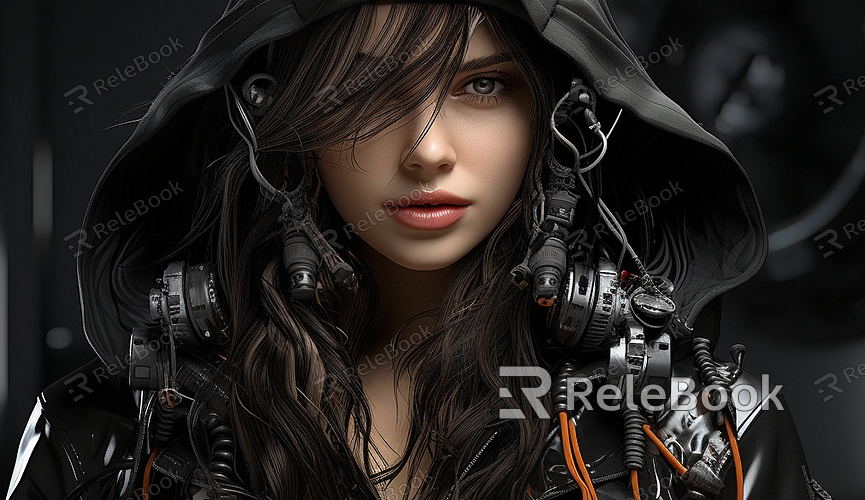How to 3D Model a Character
3D character modeling is an essential part of modern animation, gaming, and filmmaking. Whether you're a beginner or an experienced 3D artist, mastering the basic process and techniques of 3D character modeling is crucial. This article will provide a detailed guide on how to model a character in 3D, including the tools required, basic steps, and some practical tips.
I. Preparation
1. Choose the Right Software
To begin 3D character modeling, you first need to select suitable software. Here are some commonly used 3D modeling software:

- Blender: Open-source, free, powerful, suitable for beginners and professionals alike.
- Maya: Produced by Autodesk, widely used in the film and game industries, comprehensive functionality.
- ZBrush: Specializes in sculpting and high-detail modeling, suitable for creating complex characters.
- 3ds Max: Also produced by Autodesk, suitable for various fields such as architecture, gaming, and film.
2. Gather Reference Materials
Gathering reference materials is crucial before starting the modeling process. You can find inspiration from the internet, books, movies, and games. Detailed reference images of the character's proportions, poses, and details are especially important.
3. Create Concept Art
Drawing concept art of the character before starting the modeling process can be very helpful. Concept art helps clarify the character's appearance and structure, reducing potential modifications during the modeling process.
II. Modeling Steps
1. Create the Base Model
When starting the modeling process, it's common to begin with a simple geometric shape (such as a cube or sphere). Here are the specific steps:
- Initial Shape: Create a basic geometric shape, such as a cube or sphere, in your 3D software.
- Proportion Adjustment: Adjust the proportions of the basic geometric shape to roughly match the character's overall outline.
- Add Detail: Gradually add detail to the model by adding polygons (subdividing the mesh).
2. Sculpt Details
After creating the base model, you can use sculpting tools to add details. While ZBrush is a tool specifically designed for sculpting details, many 3D modeling software also provide powerful sculpting features.
- Refine Shapes: Use sculpting tools to refine facial features, hands, and other detailed parts of the character.
- Muscles and Clothing Folds: Add muscles and clothing folds based on reference materials to make the character more lifelike.
3. Topology Optimization
After sculpting the details, the model's topology structure needs to be optimized. Optimized topology improves rendering efficiency and animation effects.
- Retopology: Use retopology tools to reduce the polygon count of the model while preserving details.
- Check and Fix: Check the model's edge flow and vertex connections, and fix any potential topology issues.
4. Add Materials and Textures
After modeling is complete, you need to add materials and textures to the character to make it look more realistic.
- UV Unwrapping: Unwrap the surface of the 3D model into a 2D plane for texture painting.
- Texture Painting: Use painting software (such as Photoshop or Substance Painter) to paint textures such as color, normal, specular, etc.
- Apply Materials: Apply the textures to the model, adjust material parameters to make the character's surface look more realistic.
5. Rigging and Animation
If your character needs to be animated, it needs to be rigged.
- Create Bones: Create a bone system for the character in your 3D software, adjust the positions and orientations of the bones.
- Weight Painting: Bind the vertices of the model to the bones, adjust the weights to ensure proper deformation during animation.
- Test Animation: Create simple animation tests to ensure that the character's rigging and weight settings are correct.
III. Practical Tips
1. Check Details Multiple Times
At each stage of modeling, check the details multiple times to ensure that the model meets expectations. Particularly during sculpting and topology optimization, carefully inspect the details of each part.
2. Use Keyboard Shortcuts
Proficient use of software's keyboard shortcuts can greatly improve modeling efficiency. For example, in Blender, common shortcuts include G (move), S (scale), R (rotate), etc.
3. Learn and Reference
Learning and referencing extensively is an effective way to improve modeling skills. You can learn and exchange experiences through tutorials, training courses, or by joining 3D artist communities.
3D character modeling is a task that requires patience and skill. From choosing the right software, gathering reference materials, to creating the base model, sculpting details, topology optimization, and adding materials and textures, each step requires careful attention. Through continuous practice and learning, you'll be able to master the techniques of 3D character modeling and create stunning 3D characters. If you need high-quality 3D textures, HDRI, or 3D model downloads for creating models and virtual scenes, you can find them on Relebook. After downloading, simply import the textures and 3D models into your project for use.

